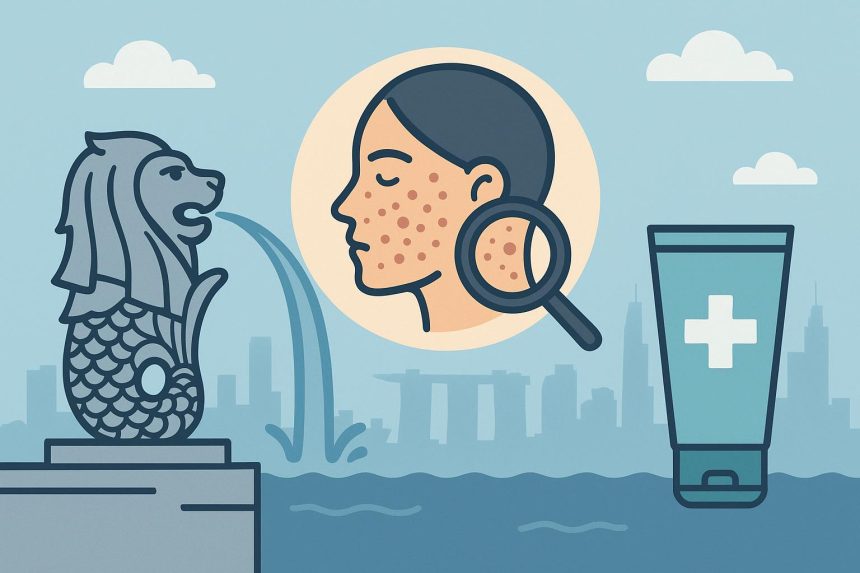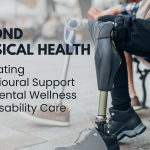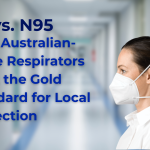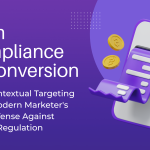Are you dealing with stubborn chin and jawline breakouts that never happened before pregnancy? Hormonal fluctuations during pregnancy, postpartum recovery, and ongoing parenting stress create conditions for adult acne. Unlike teenage acne that typically appears in the T-zone, adult breakouts often concentrate along the jawline, chin, and lower cheeks, presenting as deep, painful cystic lesions rather than surface whiteheads. These breakouts respond differently to treatment and frequently leave behind hyperpigmentation or textured scarring that persists long after the acne clears.
Motherhood brings unique skincare challenges: interrupted sleep disrupts skin repair cycles, stress elevates cortisol levels that trigger excess oil production, and limited self-care time often leads to abandoned routines. Many mothers also find that products they relied on pre-pregnancy now cause irritation or prove ineffective against hormonally-driven breakouts. For targeted solutions to post-pregnancy acne scars, consulting a clinic specializing in Singapore acne scar treatment can help restore smooth, healthy skin.
Understanding Post-Pregnancy Skin Changes
Pregnancy and postpartum hormones create dramatic skin changes that persist months or even years after delivery. Progesterone increases sebum production during pregnancy, while postpartum estrogen drops cause skin to become simultaneously oily and dehydrated. Breastfeeding mothers experience additional hormonal fluctuations, with prolactin affecting skin cell turnover rates and potentially triggering melasma alongside acne.
Sleep deprivation compounds these hormonal effects by raising inflammatory markers in the skin. Cortisol remains elevated when sleep is insufficient, stimulating oil glands and slowing wound healing. This explains why breakouts during early motherhood often take longer to resolve and leave more noticeable marks than pre-pregnancy acne.
Skin barrier function also changes after pregnancy. The acid mantle that protects against bacteria becomes compromised, allowing acne-causing bacteria to proliferate more easily. Many mothers notice increased sensitivity to products previously tolerated, requiring a complete routine overhaul. Ingredients like retinoids and high-concentration acids that worked before may now cause excessive dryness or irritation.
Building a Time-Efficient Skincare Routine
Morning routines for busy mothers can include cleansing, treatment, and protection in under five minutes. Consider starting with a gentle gel cleanser containing salicylic acid to help cleanse pores. Follow with a lightweight serum containing niacinamide to manage oil and inflammation.
Moisturizer selection should reflect your skin’s current state rather than pre-pregnancy type. Combination skin often shifts toward oily after pregnancy, and gel-cream formulations with hyaluronic acid may be more suitable than heavy creams. Apply SPF 30 or higher as your final morning step; mineral formulations with zinc oxide may be preferable if chemical sunscreens cause sensitivity.
Evening routines can incorporate stronger actives since you’re not rushing out the door. Double cleansing removes sunscreen and makeup thoroughly: start with micellar water or cleansing oil, then your morning gel cleanser. Apply treatment products in order of thinnest to thickest consistency: toners with gentle acids, targeted spot treatments, then moisturizer. Retinol alternatives like bakuchiol may provide anti-aging and acne-fighting benefits with less irritation than traditional retinoids.
💡 Did You Know?
Skin cell turnover slows with age, which may explain why adult acne takes longer to clear and marks persist longer than teenage breakouts.
Safe Ingredients While Breastfeeding
Breastfeeding mothers should avoid acne treatments that pass into breast milk. Oral medications like isotretinoin and certain antibiotics are generally not recommended, while topical treatments require careful selection. Salicylic acid in wash-off products poses minimal risk, but leave-on treatments should contain less than 2%.
Azelaic acid is considered safe for nursing mothers, offering antimicrobial and anti-inflammatory benefits without systemic absorption. Available in 10–20% concentrations, it treats active breakouts while fading post-inflammatory hyperpigmentation. Application method and frequency should be determined by a healthcare professional.
Other safe, natural options include:
- Tea tree oil (5–10%) to combat acne bacteria
- Centella asiatica extracts to support healing and reduce redness
- Green tea compounds to provide antioxidant protection and regulate sebum
These ingredients can be combined for comprehensive treatment rather than relying on a single product.
Managing Stress-Related Breakouts
Stress triggers immediate skin changes through the hypothalamic-pituitary-adrenal axis, releasing hormones that increase oil production. Many mothers notice chin and jawline breakouts during particularly challenging parenting phases or work deadlines.
Stress-reduction techniques for busy schedules include:
- Box breathing (inhale for four counts, hold, exhale for four, hold) during nap times
- Progressive muscle relaxation during nursing sessions
- Mindful walking while pushing a stroller
Performing these for just five minutes daily may help lower cortisol levels.
Adaptogens in supplements and skincare can provide longer-term resilience. Oral ashwagandha may reduce cortisol levels, while topical rhodiola or ginseng may help skin cope with environmental stressors. Consult a healthcare professional before starting any new supplement or skincare regimen.
Treating Existing Acne Scars
Acne scars require different treatment approaches depending on type:
- Ice pick scars: deep, narrow indentations
- Boxcar scars: broad depressions with defined edges
- Rolling scars: wave-like texture across larger skin areas
- Post-inflammatory hyperpigmentation: dark marks without textural changes
Home treatments primarily address hyperpigmentation. Vitamin C serums, alpha arbutin, and kojic acid can brighten dark marks, while glycolic acid exfoliation may gradually improve texture. Deep scarring requires professional intervention:
- Fractional CO₂ lasers stimulate collagen remodeling
- Picosecond lasers target pigmentation
- TCA chemical peels improve both texture and pigmentation
- Microneedling with radiofrequency supports scar remodeling
⚠️ Important Note
Scar treatments require acne clearance first. Treating scars amid active breakouts risks worsening both conditions.
Prevention Strategies
Preventing breakouts involves addressing triggers early:
- Change pillowcases every 2–3 days
- Clean phone screens daily
- Reduce high-glycemic foods (white bread, pasta, sugary snacks)
- Increase omega-3 intake via fish, walnuts, or supplements
- Limit dairy, particularly skim milk
- Apply conditioner from mid-length to ends only
- Choose sulfate-free shampoos
- Style hair before skincare application
- Use silk or satin pillowcases to reduce friction
Conclusion
Consistent treatment combining safe skincare and stress management can yield results in 8–12 weeks. Establish a sustainable routine and address acne early to prevent scarring.
If you’re experiencing persistent cystic acne, post-inflammatory hyperpigmentation, or scarring, consult a MOH-accredited aesthetic doctor for tailored evaluation and treatment.
Lynn Martelli is an editor at Readability. She received her MFA in Creative Writing from Antioch University and has worked as an editor for over 10 years. Lynn has edited a wide variety of books, including fiction, non-fiction, memoirs, and more. In her free time, Lynn enjoys reading, writing, and spending time with her family and friends.















